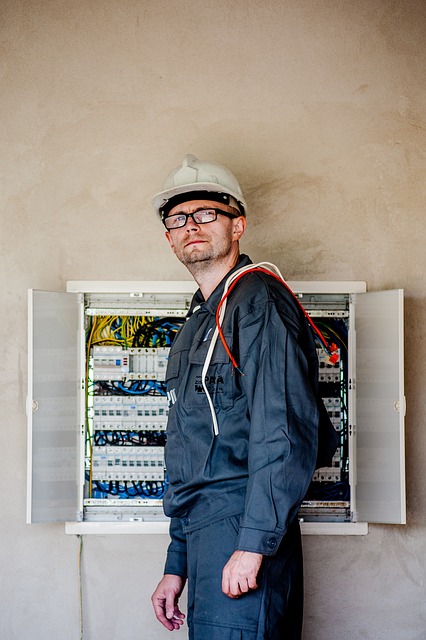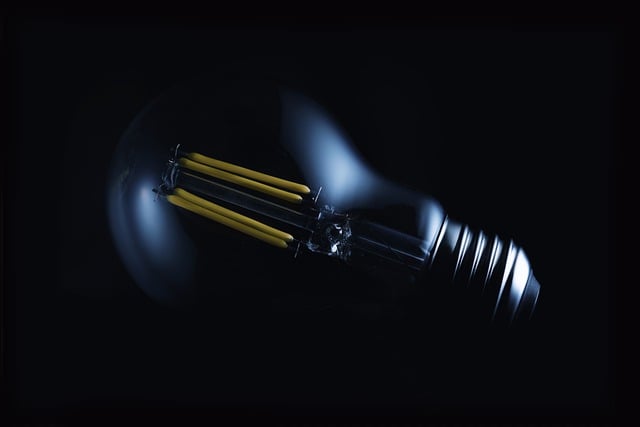Efficient data center wiring in Eugene, Oregon, is vital for reliable communication, involving meticulous planning with standardized systems. Key components include high-speed cabling (Cat6a, Cat7), switches, routers, firewalls, and secure configurations. Best practices like structured routing, proper labeling, and EMI shielding ensure optimal performance and minimize signal loss. Security measures are paramount, with industry standards ensuring compliance and streamlining maintenance. Future trends involve modular wiring, AI optimization, and advanced fiber optic technologies for enhanced efficiency and reliability in data centers.
Discover the intricacies of data center wiring in Eugene, Oregon, where efficient communication setup is paramount for optimal performance. This article explores the fundamental aspects of designing and implementing robust data connections. From understanding local wiring standards to adhering to best practices, each element contributes to a secure and compliant infrastructure. We delve into various cable types, their applications, and future trends shaping the landscape of data center connectivity in this vibrant tech hub.
- Understanding Data Center Wiring in Eugene Oregon
- Key Components of a Data Communication Setup
- Best Practices for Data Center Cabling Design
- Types of Wiring and Their Applications in Data Centers
- Ensuring Security and Compliance in Data Cable Layouts
- Future Trends in Data Center Wiring Infrastructure
Understanding Data Center Wiring in Eugene Oregon

In Eugene, Oregon, understanding the intricate web of data center wiring is paramount for anyone involved in setting up efficient data communication. The process involves a meticulous planning and execution to ensure seamless connectivity between servers, network devices, and end-users. Every cable, connector, and switch plays a crucial role in facilitating high-speed data transfer, redundancy, and security within the facility.
The data center wiring infrastructure typically includes a standardized 1U or 2U rack mount system that accommodates various hardware components. Ethernet cables, fiber optics, and power cables are carefully routed and organized to maintain order and minimize clutter. This structured approach not only simplifies maintenance but also enhances performance by reducing signal interference and ensuring optimal data flow between different segments of the network.
Key Components of a Data Communication Setup

When setting up a data communication setup in Eugene, Oregon, or anywhere else, understanding the key components is crucial for ensuring optimal performance and reliability. The foundation lies in robust data center wiring, meticulously designed to accommodate high-speed data transfer and minimize latency. This involves selecting appropriate cabling types, such as fiber optics or Cat6a, based on bandwidth requirements, and meticulously planning the physical layout to prevent signal interference.
Complementing the wiring is a reliable network infrastructure, encompassing switches, routers, and firewalls. These devices facilitate data transmission between various systems within the center and protect against unauthorized access through secure configurations. Additionally, robust power supply units (PSUs) are essential to sustain uninterrupted operations, with redundant backup systems for enhanced reliability in case of main power failures.
Best Practices for Data Center Cabling Design

When designing a data center cabling setup in Eugene, Oregon, or any location, adhering to best practices ensures optimal network performance and future-proofing. The first step is to plan meticulously, considering factors like cable types (fiber optic vs. copper), bandwidth requirements, and future expansion plans. A well-organized layout, often referred to as a data center wiring scheme, should incorporate clear labeling, color-coding for easy identification, and efficient routing to minimize congestion and signal loss.
One critical aspect is ensuring proper grounding and shielding to prevent electromagnetic interference (EMI). Proper cable management techniques, including tie-downs and organized bundles, are essential to maintain order and reduce the risk of damage. Additionally, implementing a structured cabling system allows for easier maintenance, upgrades, and troubleshooting, making it a vital best practice in data center design.
Types of Wiring and Their Applications in Data Centers

In a modern data center, efficient and reliable data center wiring is paramount. The primary types of wiring include Category 6 (Cat6) and its enhanced versions, Cat6a and Cat7. Cat6 cables are commonly used for internal network connections due to their ability to support high-speed data transfer up to 10 Gigabit Ethernet. Cat6a, with its improved shielding, is ideal for environments with higher interference, ensuring seamless communication over longer distances. For external connectivity, fiber optic cables often take center stage. These cables offer unparalleled bandwidth and security through optical signals, making them a top choice for connecting data centers to wide-area networks or other facilities.
Data center wiring considerations extend beyond the physical cables themselves. The layout and design of the network require careful planning. A well-organized topology ensures optimal performance and minimizes delays. Data centers often employ various topologies like star, ring, or mesh to facilitate efficient data flow. Additionally, proper labeling and documentation are essential for troubleshooting and maintenance, ensuring that technicians can quickly identify and resolve any issues related to data center wiring.
Ensuring Security and Compliance in Data Cable Layouts

When setting up a data communication network in Eugene, Oregon, or any location, security and compliance are paramount. Data cable layouts, particularly in sensitive environments like data centers, require careful planning to safeguard against unauthorized access and potential cyber threats. The physical infrastructure, including cables, connectors, and enclosures, must be designed with security measures to prevent data breaches and ensure the integrity of information.
Compliance with industry standards and regulations is essential. Proper labeling, secure cable management practices, and adherence to best practices for data center wiring are critical steps. These measures not only enhance security but also facilitate efficient troubleshooting and maintenance, ensuring smooth operations and reliable data transmission.
Future Trends in Data Center Wiring Infrastructure

The evolution of data centers is driving a significant shift in their wiring infrastructure, pushing towards more efficient and adaptable solutions. Future trends indicate a move away from traditional, rigid cable layouts towards modular and flexible systems. This change will enable dynamic configurations to meet the ever-changing demands of cloud computing, artificial intelligence, and 5G networks.
Advanced technologies like AI-driven network optimization, machine learning for predictive maintenance, and automation are expected to streamline data center operations. Fiber optic cables, with their higher bandwidth capabilities and reduced latency, will play a pivotal role in future wiring infrastructure. Additionally, the integration of smart sensors will enable real-time monitoring and proactive management, enhancing overall efficiency and reliability.














